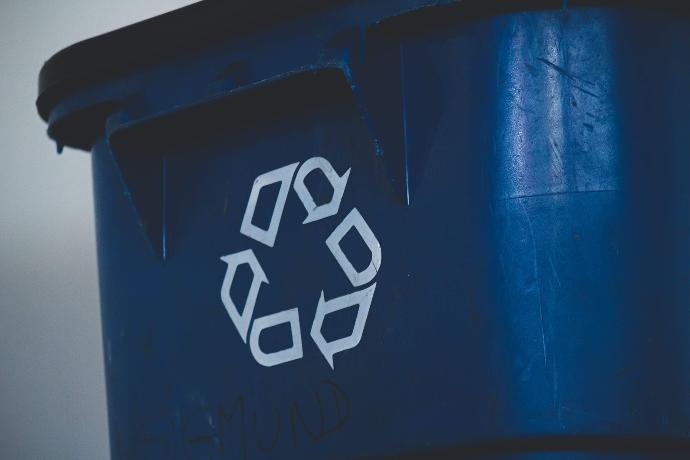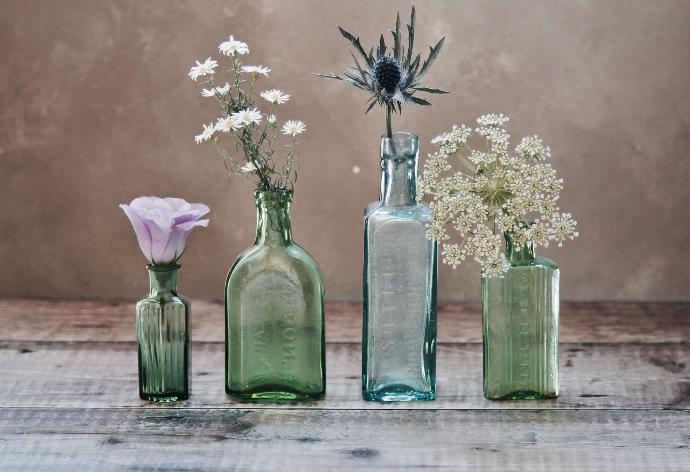Glass is one of the most famous ecological materials : it is 100% recyclable, it can be recycled over and over without losing quality, it lasts longer, it is aesthetic, etc. Glass has many benefits.
However, how is glass recycled? Are all types of glass recycled? Is glass recycling really sustainable? We will answer all your questions in this article.
TABLE OF CONTENTS:
1. Glass recycling ... from your house to your house!
a. The first glass sorting
b. Glass collection
c. Glass manufacturing
2. Are all types of glass recycled?
3. Is glass recycling really sustainable?
In conclusion...
1. Glass recycling ... from your house to your house!
a. The first glass sorting
Glass recycling starts at your place. You are responsible for the quantity and the quality of what you recycle. To give glass a new life, you only need to throw it in recycling bins or to drop it off in your local recycling center.
Glass is 100% recyclable so it's really important to discard the glass into the right bin so it can be reused. Everything you put in the glass containers will be recycled.
Quant à la qualité, 2-3 conseils pour que le verre recyclé garde toutes ses propriétés. About quality, here are 2-3 pieces of advice to ensure that glass to keep its properties.
Before throwing your glass containers, make sure to empty them properly.
It is not required to remove the lids and stoppers from your glass containers, but if you do, it will facilitate the sorting. You can also leave the stickers on your glasses.

b. Glass collection
Community organisations will collect your glass bottles and other types of jars.
After dropping off your glass, it is taken to sorting centres. There, impurities are removed as much as possible. Plastics, caps, metal, stickers, as well as any organic matter are thrown away.
This can be done either manually or automatically by optical sorting. The optical sorter detects shapes, colours and materials.
c. Glass manufacturing
Once the glass has been sorted, it is crushed. This crushed glass is called cullet. It can then be heated in furnaces to be reused again.
Cullet alone cannot be reused to make glass, it is necessary to add some raw materials to obtain a homogeneous final product. Indeed, there are purity requirements when producing new glass bottles. However, if the cullet is not pure enough, it can be sent to other recycling streams such as the glass wool one.
You can read more about glass manufacturing in our other articles.
Once produced, the glass can be returned to you!
2. Are all types of glass recycled?
No!
Only the glass used to make containers can be recycled : bottles, jars, pots and vials.
However, be careful not to confuse everything. Not all glass in your kitchen goes into the recycling bin. Culinary glass and glass tableware have a very different chemical composition from the glass in your containers. It is currently impossible to reduce them to cullet and melt them in furnaces.
Culinary glass and glass tableware are made of transparent ceramics, crystal, borosilicate or other materials and cannot be mixed with glass as they affect the quality of the recycling.
Other things should not be thrown into the recycling bins: window panes, porcelain, mirrors, ceramics, earthenware, microwave turntables, windscreens, television screens, etc.
These are not recyclable and should not make part of the glass recycling cycle.
You can always check the glass for the little logo with the arrows, which means it is recyclable.

3. Is glass recycling really sustainable?
Yes !
If the glass was not recycled and ended up in nature, it would take 3-4 thousand years to decompose. However, even if it is not recycled, it is not toxic for the environment, unlike plastic for example.
Glass is the only packaging material that can be recycled indefinitely. Recycling it is simple and accessible to all.
Recycling glass allows to limit the use of raw materials, which is a big plus as there is no need to extract sand or limestone. It should be noted that recycling does consume energy, but much less than when producing new glass. It is estimated that recycling consumes about 30% less energy than manufacturing new glass. A study on the life cycle of glass shows that recycling has 1.5 to 5 times less climate impact than producing single-use glass (This study was carried out for the brewers of Alsace).
In terms of transport, as glass is heavy, it causes more emissions.
In conclusion...
The best thing is to reduce our consumption of single-use materials. So don't hesitate to be creative and reuse your bottles, jars, etc!

